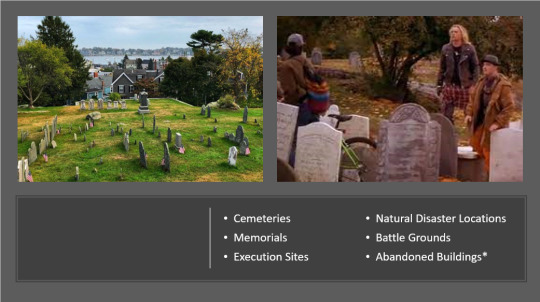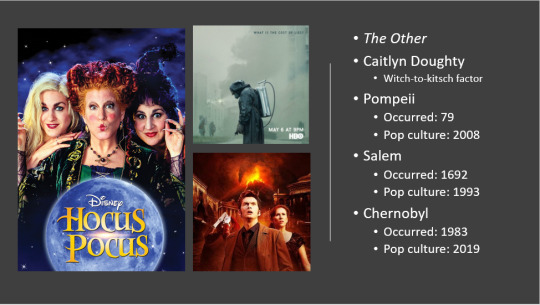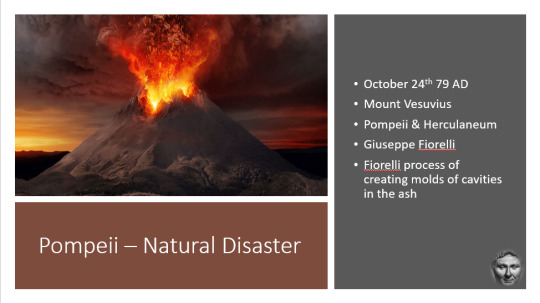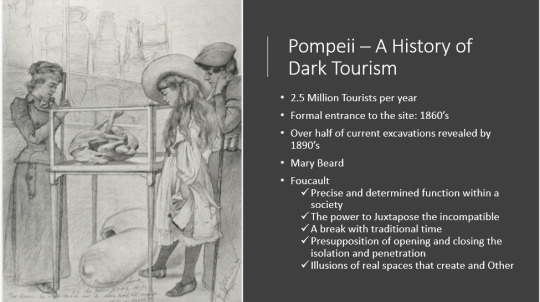#So I leave the late witch trials and the seventeenth century up to other people
Text
Not to bring everyone down this evening, but I feel like it’s worth reminding people:
When a lot of historians say stuff like “Witches weren’t actually burnt they were hanged!” they are probably- though not always- referring specifically to England and Wales* (possibly also America, I don’t know much about things over there).
Sad to say witches absolutely WERE burned in Scotland, Iceland, and many countries on the European continent, although in some places they were often strangled first.
It is good to see that certain misapprehensions about the English witch hunts have largely been corrected in the public imagination. But this is probably one of the key examples I can think of where people have said “XXX happened/never actually happened” in history when what they mean is “XXX happened in England” in history and this specific aspect often gets lost when the statement circulates outside of its original context.
#Death tw#Torture tw#historyblr#history#witch trials#When someone says something about the past always ask 'when/where'#I often forget to as well but this is one of the ones I KNOW is actually not 100% true#Especially given the fame of the North Berwick witch trials and the effect James VI had on witch hunts in England and further afield though#You would think people would remember that it is not necessarily the case that no witches were ever burnt#Also like I am in no way an expert on the history of witchcraft; it is really not my specialist subject#And for me it marks the beginning of a really dark period in my country's history#Like Scotland was always violent and unkind to women in particular and persecution for witchcraft had occasionally happened before 1590s#But the North Berwick witch trials sort of symbolise for me the beginning of a hundred or so years of other strife too#The seventeenth century saw famine; religious war; witch trials; executions for blasphemy; and all in all it really wasn't a good time#I've already had it up to here with the fourteenth and the sixteenth centuries- generally I can't take much more Dark Times#So I leave the late witch trials and the seventeenth century up to other people#Hanging is really not better than burning btw I'm not implying that simply that this is the truth of the matter#This is not a moral argument this is literally just correcting inaccuracies
12 notes
·
View notes
Text
History in the Making - Panel Discussion
Hi folks!
Today I was honored to be a part of Concordia’s History in the Making Conference and speak on the making of meaning through Death Tourism.
As not everyone was able to attend, or just prefer learning in a different format that isn’t Zoom, I figured I could at least share my slides and speakers notes here for posterity.
As these are speaking notes, please excuse if I do not catch every grammar or spelling mistake, but I hope you enjoy them nonetheless.

Today I am going to be going through how meaning is made at Death Tourism sites, and how that meaning changes over time. To do this, I am first going to explore some brief definitions of death tourism, the history of it, and how it is viewed by the general public. So please buckle up and join me as we go on a speed run through three prominent dark tourism sites – particularly what they are, how they qualify, and how meaning is made around them through the perspective of thanatourism. The site we will be using are Pompeii, Salem, and Chernobyl.

In my introduction alone, I used a mired of terms interchangeably. Death Tourism, Dark Tourism, Thanatourism, and just for funsies I am going to throw another one in there, Disaster Tourism. Some scholars will separate all these terms to represent specific aspects of the field, the site in particular, and the intentions behind the visitors themselves.
Foley and Lennon are often credited with coining the term “Dark Tourism” and have defined it as a “product of the circumstances of the late modern world.”
Intent is something that will come up often during my talk, as it is hard to concretely define a field like tourism that has so much to do with the intentions of the people taking part in it as well as the people presenting the history. Today, I will be using these terms fairly interchangeably. A definition to start us off: Dark Tourism taps into the macabre, secret, and shunned interests of humans; the world we create; and the one we leave behind.

The Macabre
The Secret
The Shunned
Creation and Destruction
Are real and valid reasons for someone to visit a site
I said before that the intention of the visitor is a hot topic when trying to figure out how to define this field. Most of us have probably been to Death Tourism sites and have never really thought about, because it fit into a different category in our mind. The image here is a graveyard, which makes sense on the surface to count as death tourism especially if you are visiting it for a reason outside of knowing someone who is buried there – this cemetery in particular is Old Burial Hill Cemetery in Salem Massachusetts and would be a hotspot for that, as it was a filming location for Hocus Pocus, Old Burial Hill Cemetery in Salem Massachusetts. Dark Tourism deals largely with the commercialization of sites associated with large amounts of human suffering and death. Commercialization can happen in a variety of ways, whether it be through charging admission to a specific site, merchandise and materials relating to the event, or economic benefits that are by-products of the sites being visited, such as surrounding towns gaining revenue from hotel rentals, meals, etc.

Since the enlightenment, European and North American cultures have taken a strict stance on separating the dead from the living. Death occurs in buildings, cities, countries removed from us and we only see the sanitized version – the more removed we are from something with our engagement with death the better it is. That isn’t a hard and fast rule however, because the distance from the death and disaster in question can be spatial or temporal in nature, as long as there is some kind of way in which you can convince yourself that all this death and destruction happened to an Other.
Caitlyn Doughty, a mortician who found notoriety through her YouTube Channel Ask a Mortician has done some research on what she refers to as the “witch to kitsch factor”, that being how much time has to pass before it is socially acceptable to take tragedy and make it into a thing of entertainment?
My argument here however is that, the meaning that a dark tourism site creates and is created unto it has both to do with the temporal separation between the entertainment and the tragedy, but also the spatial and cognitive space between the two. I know I am probably preaching to the choir when I say that history permeates pop culture, and the line between tragedy and entertainment can be seen here. Pompeii occurred close to 2,000 years ago and is now a 13 years old Doctor Who Episode wherein even an Alien that alters many historic events, even this could not be stopped.
Salem Witch Trials took place over 300 years ago, and the Halloween edge of kitschy witches have taken over the narrative of Salem, as the town has gained even more infamy in recent years due to the popularity that Disney has continued to experienced in the 26 years since its release.
Chernobyl occurred 35 years ago. It is most recently a 2019 somber but still drama packed mini-series on HBO exploring the disaster and aftermath.
These are not the first nor are they the last instances of Pompeii, Salem, and Chernobyl influencing popular culture.

The temporal and spatial separation that I just spoke of is what Foucault would use in the argument that dark tourism sites are examples of Heterotopias. That, and the Othering.
These dark tourism sites are marginal spaces, that are infused with the juxtaposition of sameness and contradictions.
Foucault breaks down what a Heterotopia is through examining its:
Precise and determined function within a society, but can still have multiple functions
The power to Juxtapose the incompatible
A break with traditional time
Presupposition of opening and closing the isolation and penetration
Illusions of real spaces that create and Other
Each of these criteria hit on the combined need for things relating to death and destruction to be both intimate to our experience of the world, but also separate from us in a way in which we can walk away from them afterwards and cease to think about it. Dark Tourism is assumed to be an escapist pastime in which we as humans can displace our fears of death, decay, destruction, and general apocalyptic fears onto this physical place – particularly because of its seemingly socially acceptable mode in which we can grapple with these kinds of topics. I said before that it was after the Enlightenment that death became removed from our day to day life. But before that? It was common and fashionable to interact with death on ones down time – morgue tours in Paris were all the rage, with some people even asking to be locked in the display room with the unknown corpses to scare their friends and other visitors.
Death has been removed from us, and so these romanticized ideas of escapism and morbid contemplations are the simplistic and incomplete theories as to why people are drawn to Thanatourism.

Now don’t get me wrong, while I say that these theories are simplistic and incomplete – I am not denying that they have some merit and nuggets of truth and wisdom to them.
We come back to intent. Why people engage in Disaster Tourism does not interest me so much as what their interaction with the field tells us about our own society.
We make meaning out of everything, that is who we are as academics but also who we are as a general species.
But how do we make meaning out of sites and events through the lens of dark tourism? I believe that the reasons we are so fascinated with these sites, outside of just general morbid curiosity (pun intended) – for starters, our fascination with these places, I posture, has to do with our false yet engrained belief that we are no longer experiencing such death and suffering anymore.
This all happened in another time, in another place, to another group of people.
Our fascination shows our ignorance.
We think, Pompeii happened so long ago, it is more of a story than anything.
We think, Salem will never happen again, we are past the time of believing that witches walk among us.
We think, Chernobyl was the fault of the Soviets, we are a democracy.
We don’t think – that this could happen again and is still happening.

I have mentioned Pompeii, Salem, and Chernobyl quite a bit now – lets get into how they are case studies for us making meaning out of dark tourism sites.
First up: Pompeii
The eruption of Mount Vesuvius and subsequent destruction of Pompeii and Herculaneum was first recorded in the letters of Pliny the Younger to Tacitus. On October 24th 79 AD,pumice stones and ash started pouring down onto the city, killing part of the population before those who were unable to escape were buried by the hot volcanic ash and burned alive by pyroclastic flow. By the end of the day, the city was buried in six to seven meters of debris, and it remained as such until its re-discovery in the seventeenth century.
During his tenure as the lead archaeologists working to recover Pompeii from 1863-1875, Giuseppe Fiorelli is credited with not only the Fiorelli process of pouring plaster of Paris into cavities in the ash to discover what created those cavities – but he was also a driving force behind excavations being done on the city from the top down, rather than the streets first to further pillage the homes that were uncovered.

Pompeii is a special case when it comes to tourism of Roman ruins.
To Victorian and Edwardian tourists – Pompeii was a disappointment to finally see. Mary Beard discusses how to these visitors, the depictions of Pompeii in art and literature, outshone the real ruins. From the beginning of tourists coming to the site though, it was always known that what they were coming to see and what would shock them the most, were the casts of the bodies that had been excavated were front and center as soon as you entered the site along the aptly named Street of Tombs.
For most of its history, Pompeii has existed on this marginal plane, being both a city of the living and of the dead. Rome as a whole has always been plagued by the stereotypes and ideals placed upon it by people outside of Italy’s borders – namely it being an eternal city that should be temporally static, anchored in its own heritage – and Pompeii has been subject to the same expectations in many respects. has been constructed many times since its unearthing. First, through its own use as a city, and then during the Romantic period as a theme park for tourists, and even in the modern era as a place of education and where “the processes of historical discovery are laid bare”. The overall shift in identity for Pompeii was its change from a city of the living, where people went about their daily lives, to a city of the dead populated by corpses and ruins, now being re-populated annually by millions of tourists.
Because Pompeii is a ruin, empty of life, and so far removed from the present reality in terms of time, it is very easy to project meaning onto – both meaning for itself and meaning for the visitors.

One of the darkest moments in American history was the Salem Witch Trials of 1692. The “largest and most lethal witch hunt in American history” began in Salem Village (now Danvers, Massachusetts) when several young girls, including Elizabeth Parris, who was the daughter of the town minister Samuel Parris, began to experience “fits” that had no discernable cause other than what the town doctor declared to be bewitchment. While the accusers themselves and many of the “witches” they targeted lived in Salem Village, the Town of Salem was where the hangings took place, with the first ones occurring in the fall of 1692 when Sarah Good, Elizabeth Hose, Susannah Martin, Rebecca Nurse, and Sarah Wildes were executed.
From the Fall of 1692 to the summer of 1693, there were 20 executions, 19 of which were hangings and one pressing.

Salem is a place of societal ruin. The entire community turned on itself, before coming to the confusing conclusion in 1702 of the magistrates declaring the trials that were held unlawful, and decreeing that the good names of the victims be restored.
I mentioned that Salem Village is now know as Danvers Massachusetts and while Salem and Salem Village, share the terrible history, Salem Village works hard to separate itself from the narrative, as seen by it renaming itself to Danvers in 1752. It desperately wants to be removed from the story of the witch trials, when arguably it has more geographic claim to the narrative than Salem itself.
Danvers has gone about making visiting any sites within its border nearly impossible. Homes and buildings related to the trials that remain in situ have continued housing families and businesses, memorials have little to no parking available, and heavy traffic on the roads makes it difficult to visit them as a pedestrian, meaning only a specialized tourist who was bound and determined to see the locations would make the Herculean effort to find them. For Salem, the buildings that it claims connections to the trials have either been moved or demolished in the time since the witch trials, and key places like the exact location of the gallows have ended up being lost to memory. The markers that denote the locations also denote their own inaccuracy and obscure the events that took place during the trials – thus disappointing tourists when they learn of the deception. Salem capitalizes on a false authenticity of place
It is not through education that Salem profits off of its dark history, but through the kitsch-based fascination of pirates and witches existing in one of the oldest colonial ports. The Salem Police Department logo even contains a witch motif. With souvenirs, dungeon experiences, and large events such as a Witch’s Walk, Salem revises the tragedy in its history in a way that romanticizes and idealizes it, similar to the way that Disney movies present history.
There was a monument erected to the victims of the witch trials in 2017. It stands apart from the rest of the city in aesthetic and in placement, silent and innocuous that it can be missed: it does not loudly advertise its existence like the rest of Salem. It works in the way that dark tourism sites overall do, in the fashion of “visitors deciding the meaning”. By being ambiguous in its specific design, it allows for the tourist to see what they think is fitting for a monument, whether that be the gallows, a jail, or a ruined building.

Chernobyl to this day still has the reputation for being the world’s worst nuclear accident. Through a surge of energy to Reactor #4, the unit caught fire on April 26th, 1986, leading to its rupture and explosion later that same day. As people fled and were evacuated from their homes, with instructions to leave everything behind as they were promised they would be able to return in a few days, Pripyat, the closet town to the reactor, was re-born as a ghost town. Across the Ukraine, Belarus, and Russia, an estimated 200,000 people have died due to radiation exposure, and an even greater number of people suffer from ongoing health conditions. As expected, the argument for the inclusion of Chernobyl in these case studies is that it represents a man-made ruin through the folly of trust in technology.

With Chernobyl, it is important to remember that it took place against the backdrop of the Cold War. The USSR and America both had agendas that they were trying to further in their coverage or lack there of, of the reactor blowing. Seeking any advantages they could claim in exposing or concealing the situation, inflating or deflating the numbers of people harmed.
It wasn’t until 2011 when Ukraine finally allowed tours to take place through Pripyat, before this it was only illegal tours led by members of the surrounding communities or family members of those impacted by the exodus. The tourists have a wide range of reactions to the site – expressing indifference to the history, excitement about the danger that they perceive, and some individuals even schadenfreude, pleasure of witnessing the misfortunes of others.
For dark tourism concerns, it’s authentic for being in situ, adding the aura of the place to the experiences and representing death in a more immediate way.
Chernobyl is prime for the romanticization treatment of media due to being within the living memory and located in Eastern Europe, a place that is already seen and depicted as a foreign Other to many, adding to the forbidden allure of visiting.
With the rise of social media, the number of tours to Chernobyl see spikes in the fall and winter, when the nature around the abandoned ruins is dying and decaying as well, lending itself to the desired aesthetic for people to show off that they visited. “Chernobyl is both real and imagined,” where one can go explore and tell others about later – but it is also staged. Knowing that people are drawn in by the heterotopic binaries of the real and the contrived, items within Chernobyl and Pripyat are posed to illicit the maximum emotional impact when photographed, the creations of juxtapositions within a juxtaposition itself.

Death Tourism deals with sites of ruin, that are explicit reminders of the circle of life and death being indiscriminate. Tragedy has happened here, and it will happen again. Someone was here before, and someone will be here after, until one day in which there will no longer be an after for humans to inhabit.
The meanings of these sites and those who visit them is continually in flux, and relates largely to the society that is taking note at the time.
But how we make meaning of these sites tells us about our current society, whether we like what we are hearing or not. It is romantic to think that we only travel to dark tourist sites because we are contemplating our own mortality, but it is ignorant to forget that history is a spiral – events will happen again if not in the same circumstances. Witches are replaced by minorities and religious groups that we don’t want to understand. Natural Disasters like Vesuvius are happening more and more as we continue to ignore climate change. Chernobyl will not stay the worst nuclear accident in mans history for very long, as every year we outpace ourselves in technological advancements. A hopeful part of me wants to think that we are participating in Dark Tourism because we want to learn from our mistakes, but the way history is presented to the visitors, both intentionally and unintentionally and interpreted, seems to always come back to schadenfreude. Death has been removed from us for so long that we seek it as a macabre pleasure, one that society doesn’t allow us to have – and that’s fine, but only when it is the death and suffering of someone else, somewhere else, sometime else.
Our fascination stems from ignorance, but not from wanting to learn from our mistakes, but from a place of relief that it wasn’t us.
________________________________________________________________
I hope you enjoyed this! I know the writing isn’t as high quality as a paper traditionally would be, but if there seems to be interest I can do future posts breaking down each site further <3
Thanks!
#history#publichistory#public history#death#tourism#death tourism#catilindoughty#ask a mortician#askamortician#chernobyl#pompeii#rome#italy#salem#witches#HITM#history in the making#concordia#western#panel#talk#academia#academics#university#westernuniversity
5 notes
·
View notes